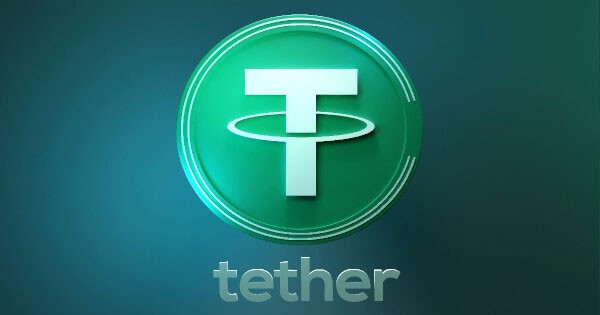How Stablecoins Help Africans Build A Better Financial Future



Editorial Note: While we adhere to strict Editorial Integrity, this post may contain references to products from our partners. Here's an explanation for How We Make Money. None of the data and information on this webpage constitutes investment advice according to our Disclaimer.
Stablecoins offer Africans a way to escape the cycle of currency depreciation, inflation, and high remittance fees that have long plagued the continent. With over 400% depreciation of the Nigerian naira and 200% of the Ghanaian cedi in the past five years, stablecoins like USDT and USDC provide a reliable, dollar-backed alternative. They enable individuals and businesses to protect savings, transact across borders quickly and cheaply, and avoid the high costs and instability of local financial systems.
Africans have long memories of the abuses they have suffered at the hands of their financial authorities. Who can forget the utter devastation caused by Zimbabwe’s hyperinflation which, at its peak in 2008, doubled every day? As a result, millions of Zimbabweans left for South Africa in search of economic opportunities in a relatively stable currency environment.
This helps explain the extraordinary rise of stablecoins across Africa. Stablecoins offer protection against reckless money expansion by central banks, and Africans are quick learners. In 2023, Nigeria received more than $20 billion in stablecoin inflows, while total crypto transactions between 2023 and 2024 exceeded $59 billion. Stablecoin usage surged 43% in sub-Saharan Africa in 2024, as people discovered its potential to escape the cycle of local currency depreciation.
Risk warning: Cryptocurrency markets are highly volatile, with sharp price swings and regulatory uncertainties. Research indicates that 75-90% of traders face losses. Only invest discretionary funds and consult an experienced financial advisor.
Africa’s cell phone moment

There's a good reason behind this astonishing growth. The table below shows the rate of depreciation of several African currencies against the USD over the last five years.
The Nigerian naira (NGN) is the worst of the lot, with a more than 400% depreciation over five years, followed by the Ghanaian cedi, losing nearly 200% over the same period. With currency depreciation like this, inflation soon follows. Unlike in some parts of the world, stablecoins remain virtually unregulated – though that may change soon.
The emergence of stablecoins could be Africa’s “cell phone moment”: just as smart phones allowed Africans instantaneous access to the same information as everyone else in the world, stablecoins (and other digital assets such as bitcoin) could turn out to be the continent’s greatest financial leveller.
| Currency | Country | Exchange rate (2019) | Exchange rate (2024) | Depreciation (%) |
|---|---|---|---|---|
| Nigerian naira (NGN) | Nigeria | 306 | 1549 | 406% |
| Ghana cedi (GHS) | Ghana | 5.53 | 16.17 | 192% |
| Malawian kwacha (MWK) | Malawi | 732 | 1,740 | 138% |
| Congolese franc (CDF) | DR Congo | 1,670 | 2,866 | 71.6% |
| Angola kwanza (AOA) | Angola | 482 | 912 | 89% |
| South African rand (ZAR) | South Africa | 14 | 19 | 35.7% |
| Kenyan shilling | Kenya | 101 | 129 | 28% |
Sources: Business Day Nigeria, Fitch Solutions, MIT Sloan, Statista
South Africa-based crypto providers like Luno, Ovex, 80eight and FiveWest have been quick to realise the potential, offering customers in these countries an opportunity to switch out of weak domestic currencies into USD-backed stablecoins like Tether (USDT) and USDC.
Stablecoins as a treasury tool
A growing list of companies operating in Nigeria, Malawi and East Africa have incorporated stablecoins into their treasury functions, converting local currencies to USDT and then converting back when they need to spend money locally. Those companies in Malawi doing this would have shielded themselves from a 67% depreciation in the kwacha in 2024. Nigerian companies would have saved their balance sheets against a halving in naira value in 2024 by switching reserves to USDT.

There’s also the benefit of being able to transact at speed, at low costs (1% or less), across borders without central bank meddling. This is of particular benefit to trading companies seeking quick settlement without having the banks eating 5% or more of the transaction value in mammoth buy-sell spreads, SWIFT fees and other sundry costs.
How stablecoins are revolutionizing remittances in Africa
Remittances form a huge part of Africa’s GDP, with some companies charging 12% and even 30% of the transaction value. This is a market begging for disruption, and stablecoins are doing just that with costs of 1% or less.
“What stablecoins offer to the African market is an opportunity to dollarize your earnings and your savings,” says Faadil Moti, CEO of Johannesburg-based global payments company 80eight. “We are seeing huge growth in stablecoin demand, and it is only beginning.”
Early crypto adopters are already benefiting by escaping local currency chaos
There’s no question in my mind that this is one of the most transformative technologies ever to make landfall in Africa, and we are just at the beginning. The early adopters are already seeing the benefits of being able to opt out of local currency madness that has kept them trapped in poverty.
Conclusion
Zimbabweans who worked and saved their entire lives, only to see their retirement savings swept away in uncontrolled inflation, now have a better option. Inevitably, regulations will arrive as governments attempt to protect their balance of payments against encroachment from these new digital technologies, but that may still be some way off. Nothing, it seems, will halt the stablecoin train.
FAQs
What are the 4 types of stablecoins?
There are four main types of stablecoins in circulation: fiat-backed (backed by central bank-issued currencies); commodity-backed (such as PAX Gold, a stablecoin backed by gold reserves); crypto-backed (such as Dai, which is pegged to the US dollar and is backed by a basket of cryptocurrencies) and algorithmic (which use a combination of smart contracts and computer algorithms).
What is the greatest benefit of stablecoins?
Stablecoins were initially developed as a way for crypto traders to park their profits in something more stable. For example, after a bull market in Bitcoin, switching to stablecoins allowed traders to hold their profits without having to leave the crypto system and return to the banking system, where costs of transacting are much higher.
What are the largest stablecoins?
Tether (which trades under the code USDT) is the largest stablecoin with a market cap of $155 billion as of June 2025. This is followed by USDC - also a US dollar-backed stablecoin - with a market cap of $61 billion, and Dai at $19 billion.
Which stablecoin is better?
It’s really a toss-up between USDT and USDC. USDT is the biggest, and therefore the most popular, but USDC may be a better choice for those who value transparency and regulatory compliance.
Related Articles
Team that worked on the article
Ciaran Ryan is a veteran financial journalist based in South Africa, where he covers cryptocurrency, mining, stock markets, and governance for Moneyweb. He also hosts the weekly Moneyweb Crypto Podcast.
He began his career as a market analyst in the banking sector before moving into journalism, initially with the Johannesburg Sunday Times. His work has been featured in global publications including Forbes, USA Today, and the Australian Financial Review.
Ciaran also spent several years in the mining industry, working as a prospector in the Democratic Republic of Congo and later as a production manager at a gold mine in Ghana’s Tarkwa district. An active investor and analyst, he played a key role in introducing crypto arbitrage to the South African market.
He believes cryptocurrencies such as stablecoins and Bitcoin provide Africans with a powerful alternative to traditional savings systems, especially in environments where inflationary policies by central banks continue to erode the value of national currencies and personal savings.
In a world where inflation quietly erodes savings, cryptocurrencies offer a lifeline – not just for investors, but for anyone seeking financial sovereignty in unstable economies.
Ciaran has also been involved in developing algorithmic trading and arbitrage systems for crypto.
Chinmay Soni is a financial analyst with more than 5 years of experience in working with stocks, Forex, derivatives, and other assets. As a founder of a boutique research firm and an active researcher, he covers various industries and fields, providing insights backed by statistical data. He is also an educator in the field of finance and technology.
As an author for Traders Union, he contributes his deep analytical insights on various topics, taking into account various aspects.
Mirjan Hipolito is a journalist and news editor at Traders Union. She is an expert crypto writer with five years of experience in the financial markets. Her specialties are daily market news, price predictions, and Initial Coin Offerings (ICO).
An investor is an individual, who invests money in an asset with the expectation that its value would appreciate in the future. The asset can be anything, including a bond, debenture, mutual fund, equity, gold, silver, exchange-traded funds (ETFs), and real-estate property.
Algorithmic trading is an advanced method that relies on advanced coding and formulas based on a mathematical model. However, compared to traditional trading methods, the process differs by being automated.
Xetra is a German Stock Exchange trading system that the Frankfurt Stock Exchange operates. Deutsche Börse is the parent company of the Frankfurt Stock Exchange.
Forex leverage is a tool enabling traders to control larger positions with a relatively small amount of capital, amplifying potential profits and losses based on the chosen leverage ratio.
Bitcoin is a decentralized digital cryptocurrency that was created in 2009 by an anonymous individual or group using the pseudonym Satoshi Nakamoto. It operates on a technology called blockchain, which is a distributed ledger that records all transactions across a network of computers.






























































































































